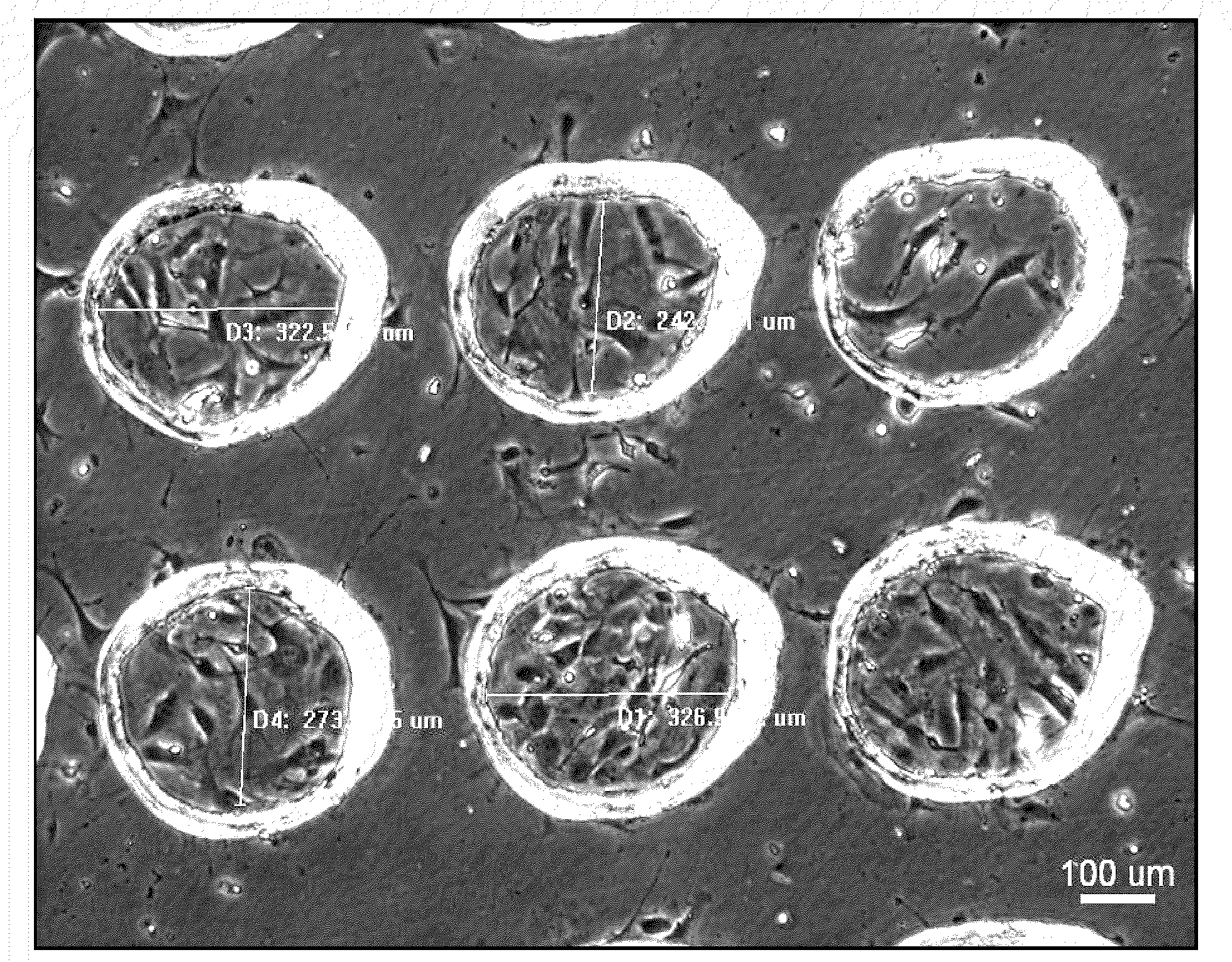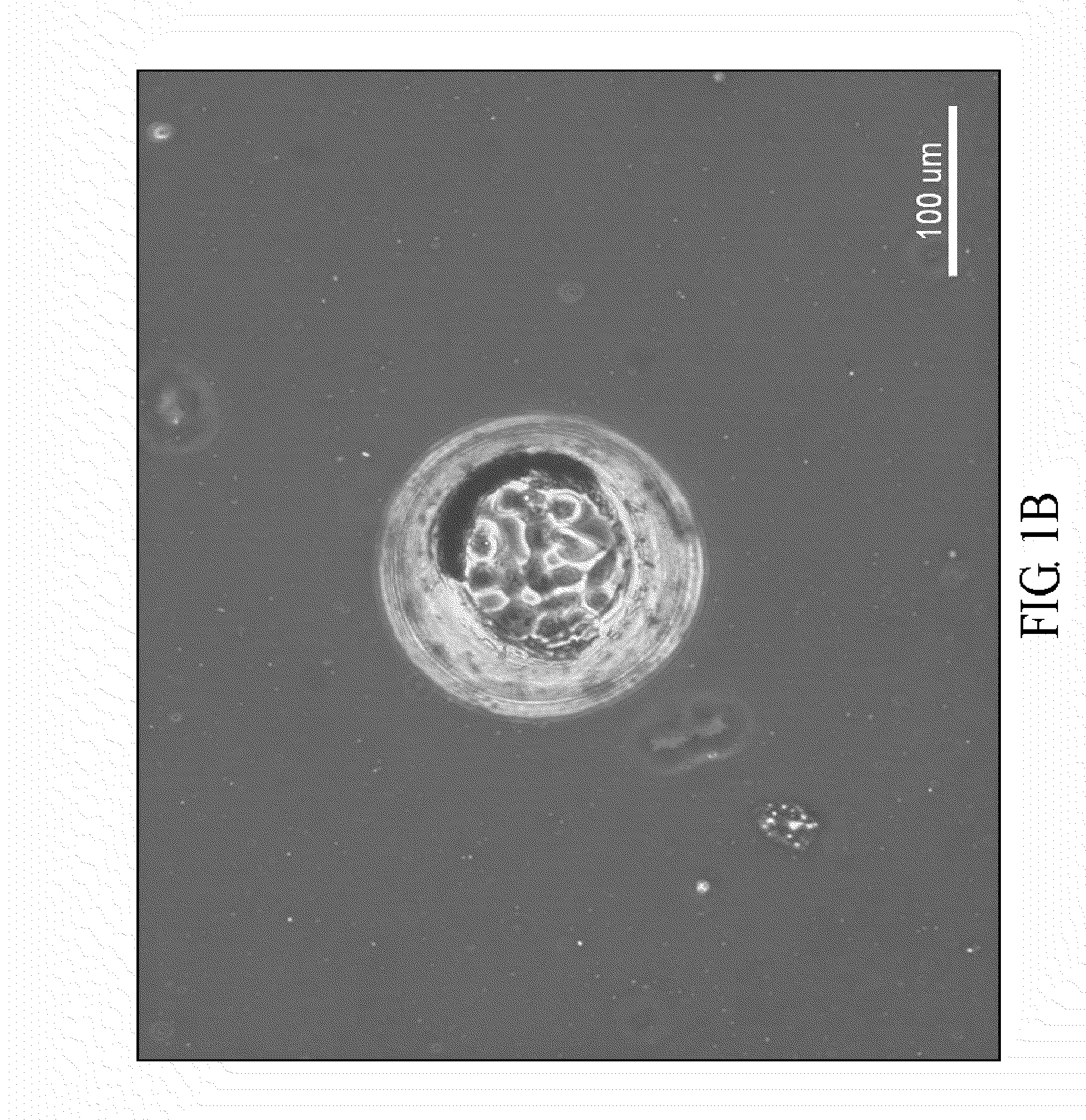Cell pattern and method for producing the same
a cell pattern and hydrophobic film technology, applied in the field of cell pattern production, can solve the problems of complex process, expensive arrayer, complicated process,
- Summary
- Abstract
- Description
- Claims
- Application Information
AI Technical Summary
Problems solved by technology
Method used
Image
Examples
example 1
[0061]A polydimethylsiloxane (PDMS) solution (DOW CORING SYLGARD®184) was vacuumed to remove air. Then the PDMS solution was poured into a plastic plate with 9-cm diameter. The plastic plate containing the PDMS solution was put onto a spin coater and rotated 10 sec at 500 rpm. After placed on a table and dried, a PDMS film with a thickness of approximately 100-500 μm was obtained.
[0062]A plurality of dots was drawn by autoCAD software and saved as a graphic file. The file was exported to a laser device (Laserpro Venus® V-30). The laser device was set at 70% of maximum power output and 50% of maximum speed of the laser tip. The film was cut three times. The PDMS film having a plurality of pores with a radius of 95 μm-100 μm as shown in FIG. 1A was obtained.
[0063]The PDMS film shown as FIG. 1A was moved out from the plastic plate and washed by ultrasound vibration. The film was then transferred to a polystyrene Petri dish (CORNING®) and attached the bottom of the dish. The cell medium...
example 2
[0064]The process herein was similar to that in Example 1, however, pores with a radius of 250 μm were drawn instead. After laser cutting, the PDMS film having a plurality of pores with a radius of 290 μm-310 μm as shown in FIG. 2A was obtained. The PDMS film of FIG. 2A was then used to culture the fibroblasts on the medium and a portion of the cell pattern was provided as shown in FIG. 2B. Then the PDMS film was removed, with the cell pattern obtained was as shown in FIG. 2C-1 and FIG. 2C-2.
example 3
[0065]The process herein was similar to that in Example 1, however pores with a radius of 350 μm were drawn instead. After laser cutting, the PDMS film having a plurality of pores with a radius of 360 μm-390 μm as shown in FIG. 3A was obtained. The PDMS film of FIG. 3A was then used to culture fibroblasts on the medium and a portion of the cell pattern was provided as shown in FIG. 3B. The PDMS film was removed from the medium, and a cell pattern was obtained as shown as FIG. 3C.
PUM
| Property | Measurement | Unit |
|---|---|---|
| thickness | aaaaa | aaaaa |
| thickness | aaaaa | aaaaa |
| thickness | aaaaa | aaaaa |
Abstract
Description
Claims
Application Information
 Login to View More
Login to View More - R&D
- Intellectual Property
- Life Sciences
- Materials
- Tech Scout
- Unparalleled Data Quality
- Higher Quality Content
- 60% Fewer Hallucinations
Browse by: Latest US Patents, China's latest patents, Technical Efficacy Thesaurus, Application Domain, Technology Topic, Popular Technical Reports.
© 2025 PatSnap. All rights reserved.Legal|Privacy policy|Modern Slavery Act Transparency Statement|Sitemap|About US| Contact US: help@patsnap.com



